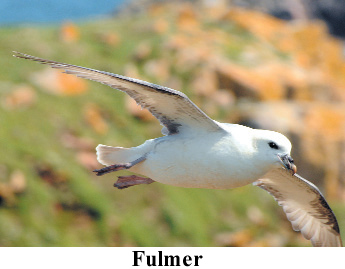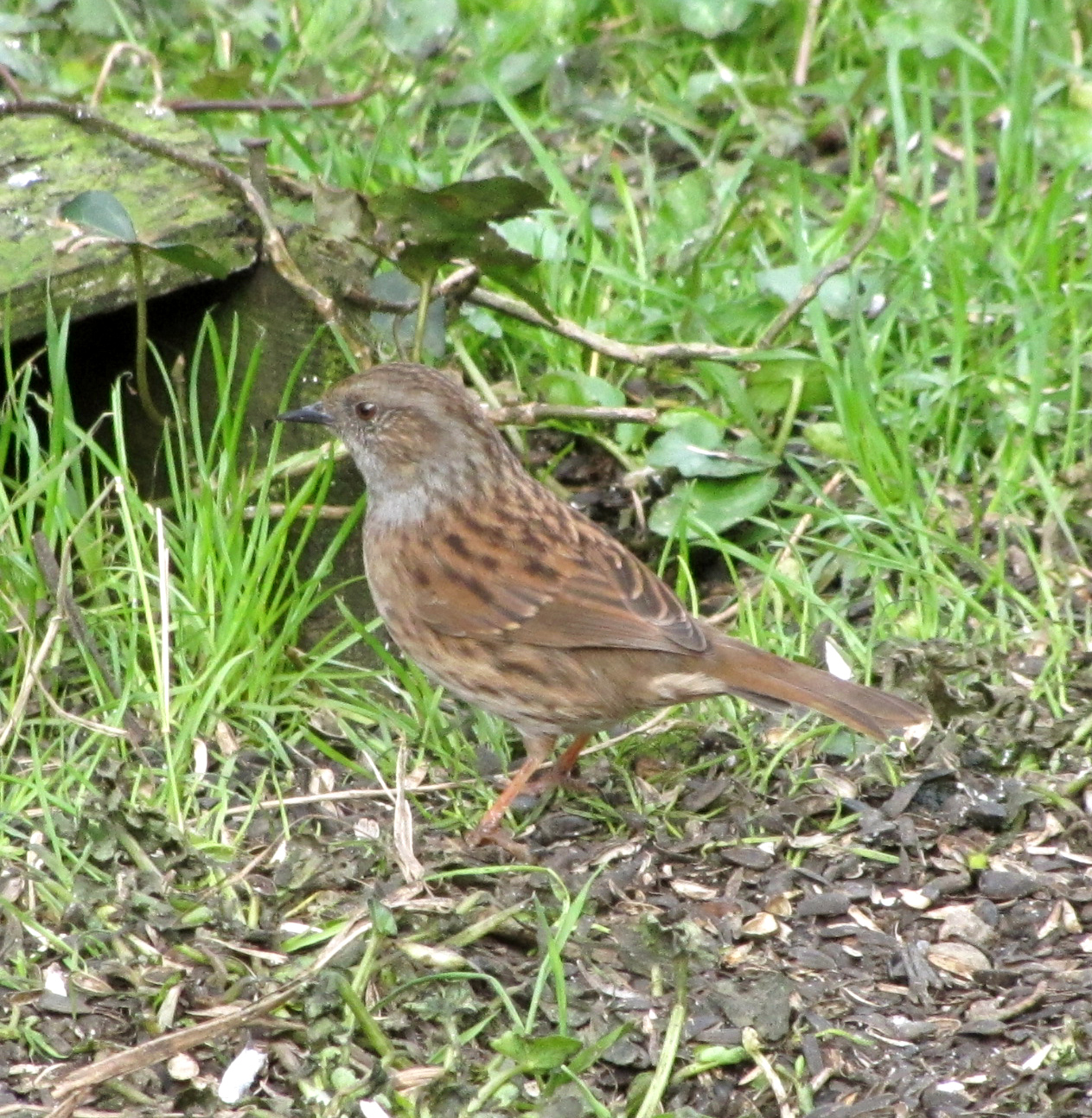| Dalkey Tidy Towns |
  |
| Dalkey Tidy Towns |
  |
Wildlife
Newsletter for the Township of Dalkey April 2009 - Michael Ryan |
 |
It
probably wasn’t a surprise to hear that last winter was the coldest in
18 years but what was maybe more surprising was that it was also a very dry
winter with rainfall levels way below average. In February a gorse fire was
started beside the ‘Green Road’ on Dalkey Hill but thankfully didn’t
spread too far. Last year the biggest gorse fire was in late spring when birds
would be nesting. One of the ways in which the recent cycle of dry springs
and wet summers has very damaging effects on our wildlife. Further down the
hill wheeling out from the wall and cliffs at White Rock beach on stiff pale
gray wings, those seabirds might look like gulls but in fact they’re
Fulmars and belong to the group of seabirds known as Petrels. |
| Petrels,
the family of birds that includes Albatrosses, are named after St.Peter because
their habit of flying low over the sea makes them look like they’re walking on water. Like the albatrosses, Fulmars travel great distances over the sea and their stiff winged glide is designed to cover very long distances using the minimum energy possible. If you’re on the beach you can see them launch from small alcoves in the wall and glide out over the sea with barely a stiff flap of their wings. Before the last century they were strictly birds of the far north and the Arctic, breeding in Greenland, Iceland and far northern islands like St.Kildas but they gradually started to move south and were first recorded breeding in Ireland when they nested in Co. Mayo in 1911. There is a theory that they expanded their range by following whaling ships, feeding on any discarded flesh thrown overboard. They’ve done very well since and during the ‘Seabird 2000’ survey, nearly 40,000 nesting sites were counted around the Irish coastline. They can live very long lives, some birds that were ringed when young are known to have survived into their late 40s and 50s. It’s only in their 7th or 8th year that they begin to mate and breed themselves. Like other long lived birds they only have one chick a year. Sadly our Dalkey birds sometimes nest where they are vulnerable to human disturbance and I’ve mentioned before that on a number of occasions I’ve seen people throwing rocks at them from the railway line and the cliff tops, a senseless act of vandalism trying to injure these lovely creatures. The birds will sit on the nest when humans approach and this habit of being very approachable gained this and many other species of Albatross related species the old name Mallemuck meaning ‘foolish gull’. But they do have a unique defence method which is to projectile vomit the contents of their stomachs, a fishy mess, at approaching predators. That accounts for the origin of their current name, Fulmar, an Old Norse word for ‘foul gull’. Although this defensive reaction would have a nuisance value for a human, for a bird to be covered with this oily substance can be fatal since it ruins the waterproofing properties of the bird’s plumage and they can drown if they subsequently land on water. It has been reported that a sea eagle was witnessed drowning after a fulmar disgorged on it. |
| Most
of the Fulmar’s food is taken from the surface of the sea. Fulmars have very dark plumage around their eyes and this acts like sunglasses cutting down the glare from the water when they’re looking for food. Another very distinctive aspect of their appearance is a short tubelike appendage on their bill. It’s believed this acts to filter out the salt they ingest when feeding on water. On the way down to the beach you might see a small bird perched on a gorse bush making occasional flying forays for insects in flight then returning to the same perch. This is a Stonechat, a little like a robin in size but with a dark head which turns black on the male in breeding plumage. A pair of stonechats can be seen around here throughout the year. Their name derives from a sharp clicking call they make which is compared to the sound of two stones being hit together. Other regular birds to be seen from here are ravens, jackdaws, sparrowhawks and other raptors and it was when coming up from the beach last year I saw a Red Kite drifting over the hill. |
 |
 |
Later
in the summer a Whitethroat sometimes sings from between the Vico Road and
the railway line and greenfinch and wrens are to be seen there all year round.
Dunnocks might be one of the most commonly overlooked bird to be found in gardens.
They used be known as ‘Hedge sparrows’ although they’re no
relation to the sparrow. They belong to a different family of birds, the Accentors,
the only other species in Europe being the Alpine Accentor found at very high
altitudes as its name implies. Our Dunnock is very low key, very unobtrusive
and is often unflatteringly described as having skulking behaviour. As if that wasn’t insulting enough, its song, a short fast burst of repeated notes, is sometimes described as sounding ‘squeaky’, like a supermarket trolly that needs oiling. The Dunnocks in my garden regularly cause me concern when I don’t see them for weeks at a time and I begin to worry have they fallen victim of a predator. Often feeding on the ground, picking up fallen seed under the feeders, makes them very vulnerable to cats. Happily though they always reappear after a while, bathing in the bird bath or singing from a fuchsia bush. Recently I witnessed a little innovation in our Dunnock’s behaviour when I saw one fly from a perch on to a sunflower seed feeder. grasping awkwardly but long enough to get |
|
some seed. Hopefully it will get a bit more adept at doing this and join the
rest of the ‘guys’ on the feeder.Saying that, maybe it is safer
skulking on the ground. This morning, as I topped up the feeders, a female
Sparrowhawk flashed around the hedge and sped past me about four feet away,
a brief flash of feathers and talons hoping to catch some feeding birds unawares
but finding me instead. So maybe the Dunnock is better off on the ground,
skulking but safe. |
 |